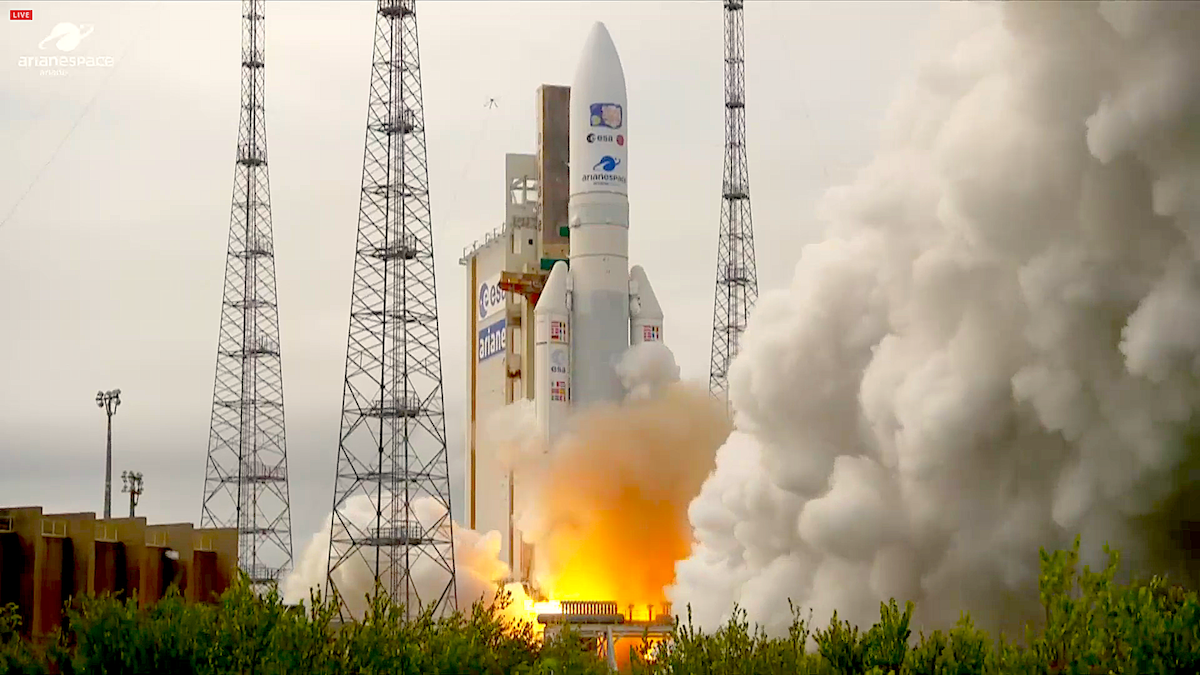It is not only in the tunnels of CERN that we learn about the origin and composition of the Universe. Look up, and space offers the most beautiful phenomena to study: black holes, dark matter, cosmic rays, etc. Studying planets, their structure and their composition teach us a lot about the formation of our own planet and might one day lead us to find a habitat and possibly life. One of the intriguing features of the biggest planet in our solar system, Jupiter, is the sheer number of its moons, almost one hundred in total, three of which have large oceans under a huge ice crust. Today, the European Space Agency (ESA) is launching the Juice – Jupiter Icy Moons Explorer – mission to explore the gas giant and its icy moons.
Before setting off to meet the king of the gods and some of his many satellites (all named after his lovers), the Juice spacecraft had to be tested against the effects of the radiation environment induced by the magnetic fields surrounding the planet. Jupiter has a very strong magnetic field, which traps protons and electrons of energies up to several hundred megaelectronvolts with very large fluxes. The direct and indirect impact of high-energy electrons on modern electronic devices, and in particular their ability to cause SEE (single event effects), had never been studied before.

CERN has the only facility on Earth that is able to replicate the most extreme phenomena of Jupiter’s harsh radiative environment. In 2018, in order to prepare the spacecraft for its exploration mission, ESA came to VESPER (the very energetic electron facility for space planetary exploration missions). There, engineers and physicists successfully tested the capacity of some of Juice’s critical electronic components to withstand high-energy electron fluxes for several years of operation. “The tests performed at CERN reinforce ESA’s planetary exploration ambitions and helped optimise the Juice spacecraft design,” says Giuseppe Sarri, ESA Juice project manager
“VESPER is part of CLEAR (the CERN Linear Electron Accelerator for Research). We are happy to have helped better understand, anticipate and mitigate the impact of Jupiter’s radiation. Godspeed Juice!”, says Roberto Corsini, CLEAR facility leader.
CERN is a recognised expert in the testing of satellites and space components against radiation. Another irradiation facility available to space users is CHARM, which, at the instigation of a recent European-funded project, will become a leading facility in Europe for high penetration testing of space electronics using high-energy heavy ions.
____

